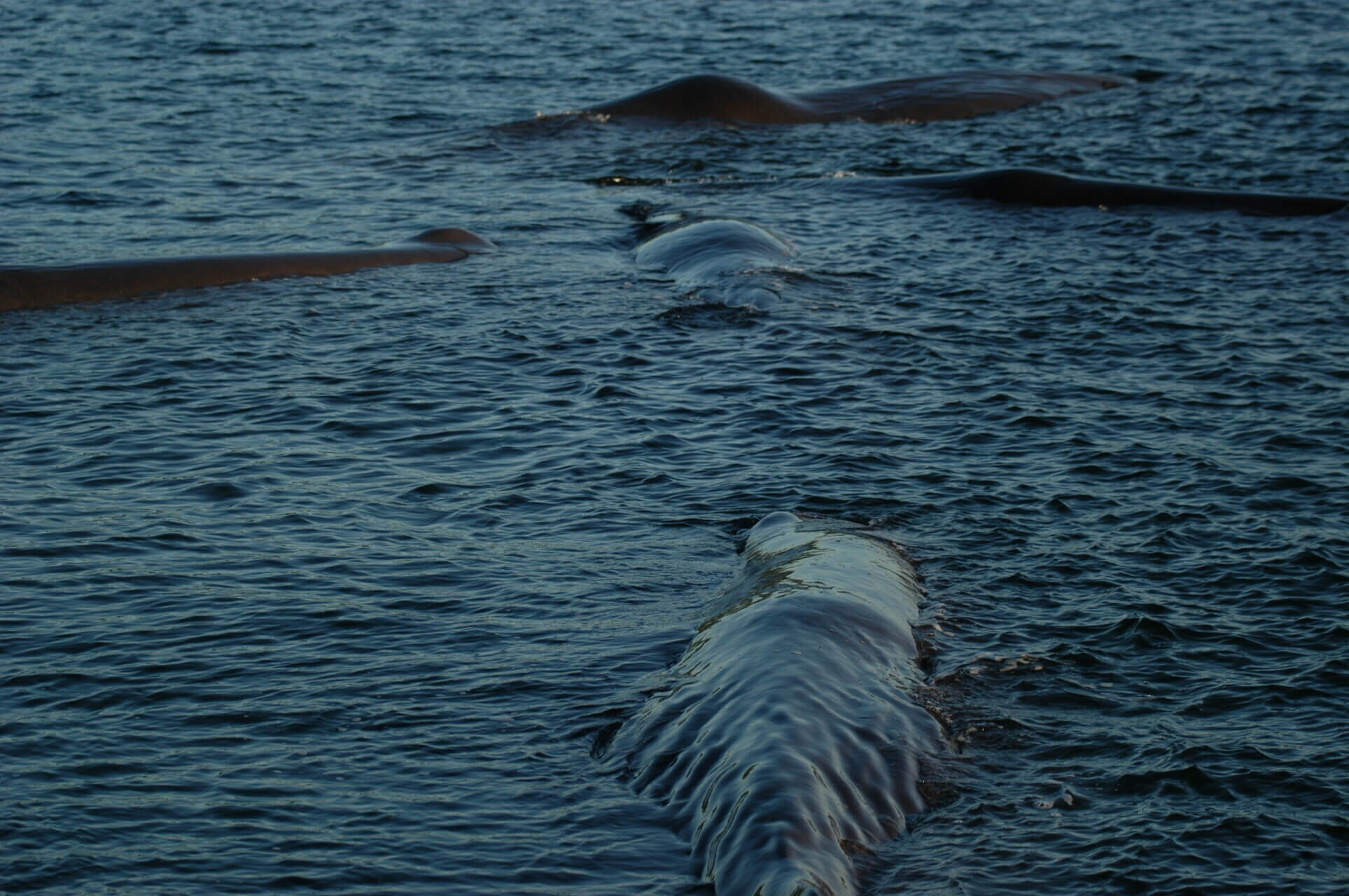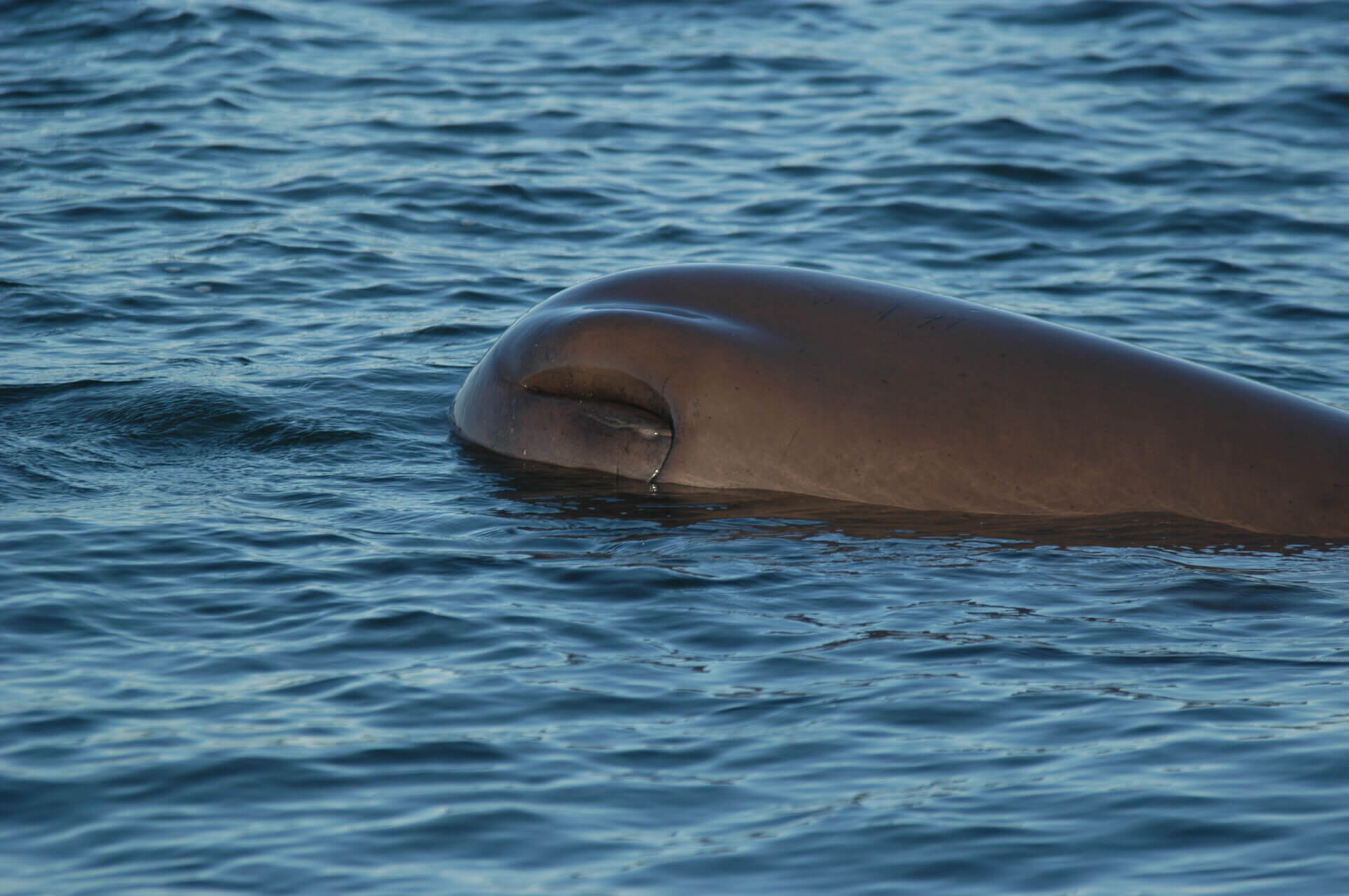Are sperm whales really as solitary as we think? The answer might surprise you. Indeed, you probably would have never suspected that these mythical sea creatures live in clans of up to 20,000 individuals. Yet, this is precisely what is described in an article by biologist Hal Whitehead of Dalhousie University and published in January 2024 in the journal Royal Society Open Science. Seven of these clans have been identified in the Pacific Ocean. However, the surprises don’t end there! Each of these large clans has its own culture which is notably based on communication.
An exponential hierarchy!
Of course, watching 20,000 sperm whales swimming side by side in the Pacific seems entirely unrealistic. Obviously, the members of these immense clans do not all move in unison. Rather, they are divided into groups of no more than thirty individuals. Each of these groups is in turn composed of social units of around 10 or so individuals. Although it is not uncommon to encounter groups of sperm whales, they are generally short lasting. These social units only come together briefly, from a few hours to a few days. But no so fast! Merging social units are always part of the same clan.
The impressive transition from groups of 30 individuals to the formation of clans of 20,000 sperm whales suggests that there could potentially be several other hierarchical levels within these clans. This remains to be discovered!
A culture based on communication
How can we differentiate one sperm whale clan from another? The most clearly established distinctions by researchers are the vocal dialects that characterize each clan. Used notably for echolocating prey, the spermaceti organ in the enormous head of these marine giants also plays a role in communication.
The vocal dialects of these animals are characterized by codas, series of clicks that last a few seconds and which can resemble Morse code. Codas can be distinguished by their pattern: the number of clicks in a sequence, rhythm, and silences between clicks.
A recent study by researcher Taylor A. Hersh demonstrates how certain codas are used as symbolic markers between clans. Cultural groups use symbolic markers to identify themselves. In humans, these markers could take the form of a tattoo or an anthem, while in sperm whales, clans are distinguished by their dialect. Indeed, each clan has identity codas that always follow a specific pattern. Thus, the codas seem to act as signals that enable sperm whales to identify the clan of origin of their peers. By listening and analyzing the patterns of these codas, seven different clans of sperm whales were identified in the Pacific Ocean. Identity codas also have an important place within a clan’s social structure. Using codas, a social unit can choose other units from within the same clan to form a group.
Sperm whales are marine mammals that can be observed around the globe. They can also be found in the St. Lawrence River. Given that the geographical range of a given clan can cover huge swaths of ocean – from Japan to Chile, for example – it is not uncommon for several clans to coexist in the same waters. Codas recorded in two clans sharing the same territory are more likely to have more pronounced differences in their patterns.
Matrilineal societies
Being matrilineal, clans consist only of females and their calves. Caretaking tasks such as the education, feeding and protection of calves are shared between the adults of each social unit. Females stay within the same clan all their lives.
Culture is passed on from adults to calves. From their mothers and their social units, calves learn the vocal dialects and behaviours specific to their clan, including unique hunting techniques and, eventually, how to protect other calves . This is a culture that they will retain their entire lives.
And where do males fit into all this? After all, sperm whales can sometimes be observed roaming the seas alone. While females stick together their whole lives, the Encyclopedia of Marine Mammals describes very different behaviour for males. Once they’ve acquired their cultural baggage from their mothers, they leave the family unit in which they grew up to join more loosely-knit groups composed solely of other young males. However, they later end up splitting off and migrating northward, alone, toward the colder waters of the globe. After they have reached sexual maturity, they seek out females with which to reproduce, but only linger for a few hours per social unit. Males are not shy about mating with females from other clans, as Whitehead mentions.
New clans to discover?
The study of sperm whale clans has led to discussions regarding the potential presence of similar cultures in other marine species. In an interview on Radio-Canada’s Années Lumières, GREMM Scientific Director Robert Michaud hypothesizes about the presence of these cultures in St. Lawrence belugas. Similar to sperm whales, the study of vocal repertoires in communities of females may very well lead to the discovery of entirely new cultures! The doors to research are wide open.
Learn more
- (2009) Perrin, W.F., Thewissen, J.G.M. and Würsig, B. Encyclopedia of marine mammals. (2e édition) Elseiver.









